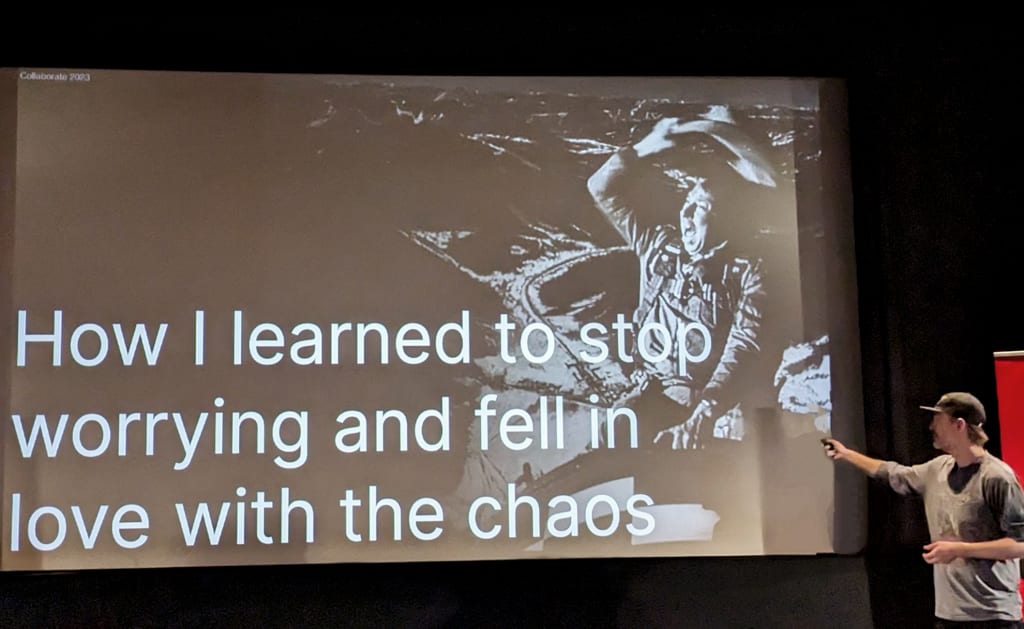
Collaborate Bristol is an annual conference for anyone working in or adjacent to the world of design. I attended it on Friday for the first time and let me tell you, it was great.
It was a good moment in time for Delib to attend: the last few months have seen a lot more focus on content design across the company, with lessons learned, iterated and implemented almost faster than we can keep track of them. We’re doing great work, but it’s still new, so it was really great to spend a day hearing from people who’ve been in this space for years or even decades.
It was a full-on day of talks in the Watershed’s blessedly air-conditioned Cinema 1. We heard from designers who have overhauled internal company culture with bespoke software, worked on financial trackers upon which the global economy relies, and are changing the game of VR and AR. Here are my top 5 takeaways.
1. Embrace the chaos
“Will this work?”
“I don’t know. Let’s go find out.”
Nils Bjorn gave a great talk on surrendering to chaos with a nice bit of astrophysics thrown in. It’s impossible to fully remain in control when people’s needs change, budgets collapse, WCAG gets updated and humans remain humans. What is possible is turning it to your advantage: having an open mind, being eternally curious and killing your darlings makes you a better designer. The product is never going to be ‘right’ for everyone – so make sure it’s easy to change. Being adaptable is more important than being perfect.
2. Minimise complexity
Users don’t care about sophisticated code or your expansive vocabulary. They just want to do the thing.
3. Be conscious of your unconscious biases
This is super important for designing accessible products and services, but it’s also important for company culture, particularly among distributed teams. It’s really hard to think beyond the constraints of our own experiences – and that’s fine, but we need to make sure we listen to those that have had those experiences too.

4. Bring people along on the journey
Something that came up over and over and over again was the tension that arises between designers and…basically everyone else. It’s because by its nature, design means modernising products/services, and getting stakeholders on board is hard. You won’t win hearts and minds by simply saying ‘the science says this method will be more effective, so we’re changing it’, because that sounds an awful lot like ‘this isn’t good enough’. People get defensive. They’ve got existing ways of working, they’re resistant to change. It’s human nature.
By being open about the process, by identifying people’s fears, concerns and opposition and addressing them head-on, and by getting that buy-in early, you’ll save yourself a lot of heartache down the line.
5. Connect on a human level
There wasn’t a single talk that didn’t touch upon the power of human connection. Unsurprising, for a conference called Collaborate, but it really brought home the fact that design is so much more than just design. Designers can’t work in isolation within their teams, but they need people outside their teams too: stakeholders, senior leadership, and of course the end users. Building the thing is only half the job – connecting with others on a personal level and finding common ground is the other.